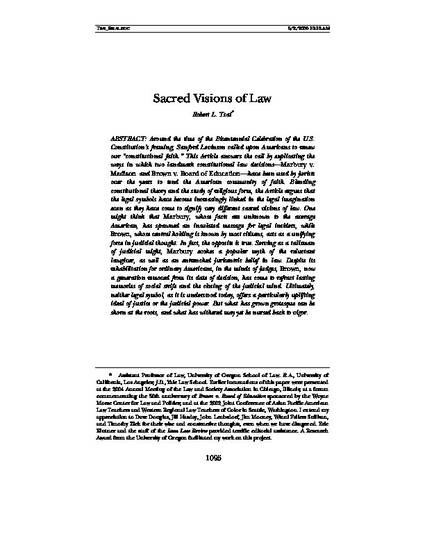
Iowa Law Review
Around the time of the Bicentennial Celebration of the U.S. Constitution's framing, Professor Sanford Levinson called upon Americans to renew our constitutional faith. This article answers the call by examining how two legal symbols - Marbury v. Madison and Brown v. Board of Education - have been used by jurists over the years to tend the American community of faith. Blending constitutional theory and the study of religious form, the article argues that the decisions have become increasingly linked in the legal imagination even as they have come to signify very different sacred visions of law. One might think that Marbury, whose facts are unknown to the average American, has spawned an insulated message for legal insiders, while Brown, whose central holding is known by most citizens, acts as a unifying force in judicial thought. In fact, the opposite is true. Serving jurists as a talisman of judicial might, Marbury evokes a popular legal-cultural myth of the reluctant lawgiver, as well as an entrenched juricentric belief in law. Despite its rehabilitation for ordinary Americans, in the minds of jurists, Brown, now a generation removed from its date of decision, has come to signify social strife and the closing of the judicial mind. Ultimately, neither symbol, as it is understood today, offers a particularly inspiring ideal of justice or the judicial power. But what has grown grotesque can be shorn at its roots, and what has withered may yet be nursed back to vigor.
Available at: http://works.bepress.com/robert_tsai/94/
